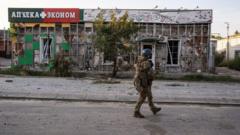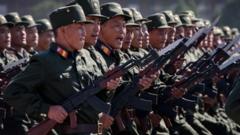Following the devastating Hamas attacks and subsequent warfare with Israel, the landscape of the Middle East has undergone significant transformation, leading to a newly negotiated cease-fire that redefines regional relations and power dynamics.
Transformative Shifts in the Middle East Post October 7 Attacks

Transformative Shifts in the Middle East Post October 7 Attacks
The recent cease-fire between Israel and Hamas heralds a new era of alliances, conflicts, and political landscapes in the Middle East.
The Middle East has witnessed unprecedented changes following the attacks on October 7, 2023, when Hamas militants launched a fatal cross-border raid, igniting a devastating conflict with Israel that further decimated Gaza. As a result, the geopolitical framework of the region has shifted in startling ways. Key alliances have been disrupted, previously established "red lines" have been crossed, and a longstanding dictatorship that has been the foundation of the region's politics has collapsed.
With a cease-fire between Israel and Hamas scheduled to commence on Sunday, it is essential to examine the dramatic alterations in the Middle East landscape over the past fifteen months.
**Analyzing the Middle East’s New Dynamics**
In Israel, the military's dominance has been reaffirmed, though it comes at a high cost both diplomatically and domestically. Israeli leadership viewed the attacks by Hamas as an existential crisis, driving a staunch commitment to not only defeat Hamas but to weaken its main supporter, Iran. Israel's military efforts have successfully crippled Hamas within Gaza, while also inflicting severe damage to Hezbollah, a Lebanese Shiite group, further disrupting Iran’s network of allies across the region.
The road towards peace remains precarious, with cost struggling to meet aspirations for long-term stability amidst ongoing protests and calls for hostages' release echoing throughout Israeli cities like Tel Aviv. With a revised cease-fire now in sight, the balance of power is shifting, leaving the future of the Middle East uncertain yet ripe for new political discourse and possibilities.
With a cease-fire between Israel and Hamas scheduled to commence on Sunday, it is essential to examine the dramatic alterations in the Middle East landscape over the past fifteen months.
**Analyzing the Middle East’s New Dynamics**
In Israel, the military's dominance has been reaffirmed, though it comes at a high cost both diplomatically and domestically. Israeli leadership viewed the attacks by Hamas as an existential crisis, driving a staunch commitment to not only defeat Hamas but to weaken its main supporter, Iran. Israel's military efforts have successfully crippled Hamas within Gaza, while also inflicting severe damage to Hezbollah, a Lebanese Shiite group, further disrupting Iran’s network of allies across the region.
The road towards peace remains precarious, with cost struggling to meet aspirations for long-term stability amidst ongoing protests and calls for hostages' release echoing throughout Israeli cities like Tel Aviv. With a revised cease-fire now in sight, the balance of power is shifting, leaving the future of the Middle East uncertain yet ripe for new political discourse and possibilities.























